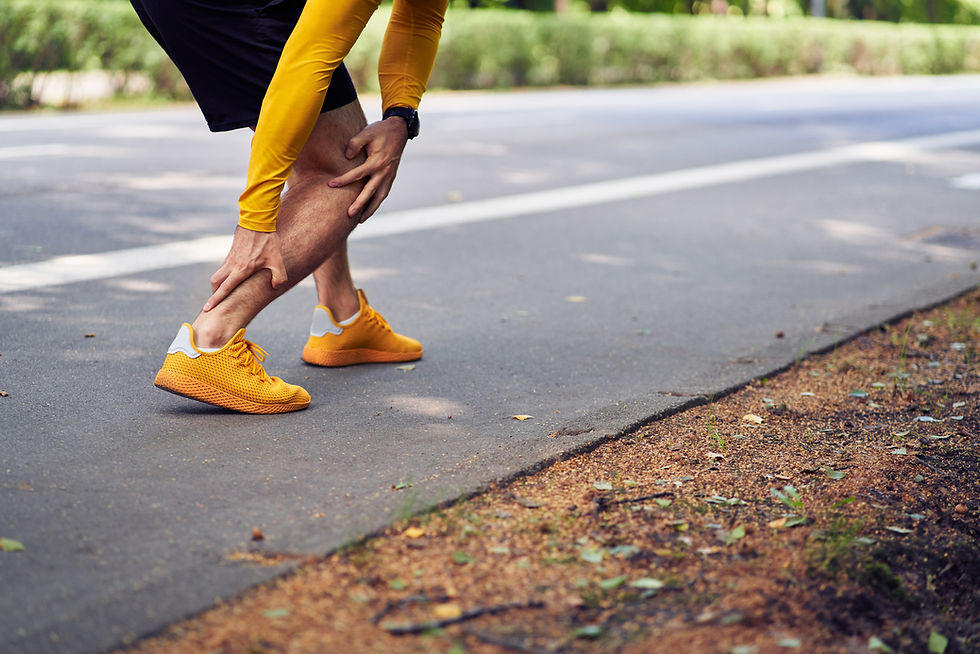5 Tips To Staying Injury Free This Winter
- Kevin Ryan, MPT
- Oct 26, 2017
- 3 min read

Daylight savings is just around the corner. Our days are getting shorter, the weather a little colder, and we are beginning to realize that winter is fast approaching. Many of us increase our activities significantly over the summer. We are energized by longer days, warmer weather, and the atmosphere that spring and summer bring. We decide that we are going to continue our new activity level all winter and retreat to the confines of an indoor workout. We often retreat to a gym, a home workout routine, online videos, or a treadmill/cardio machine with all good intentions. Then when the first sign of injury, pain, or some unfamiliar discomfort arises; we lose all motivation and shut it down. Our good intentions are gone and so is our activity until next summer. Here are a few tips to make sure the routine you choose is well rounded, sustainable, and can continue to be there for you all the way until next spring.
1. ALWAYS WARM-UP – Warming up does not necessarily mean riding a bike or walking on a treadmill, but a dynamic warm-up of stretches, body weight exercises, core training, or performing very light repetitions of your current routine that will allow the blood flow to the muscles and reduce the initial strain of activity. It will improve overall mobility and the effectiveness of every workout.
2. DON'T FORGET THE CORE – We use our core stabilizer muscles for every movement, posture, and activity we do throughout the day and at the gym. A weak core puts more pressure on the spine and can add stress to the peripheral joints causing improper alignment, improper muscle use, and eventually breakdown to the low back, neck, hips, knees, and shoulders.
3. STABILIZE – Often in the gym we focus on large muscle groups like the pecs , biceps, calves, abs, and quad muscles; forgetting all about the rotator cuff, hip rotators, lateral ankle stabilizers, hamstrings, and lower trapezius muscles leaving us susceptible to postural imbalances and injury. These imbalances are the most frequent causes of shoulder, knee, and low back pathologies.
4. KNOW YOUR BODY TYPE – A good balance of strengthening, mobility, stretching, and stabilizing exercises is very important to reducing injury. If you are extremely flexible spend a little more time on strengthening exercises or stabilization exercises and if you are inflexible don’t neglect your static or dynamic stretches. We often matriculate towards exercises that are easy to do, but often it is the exercise that we don’t like that are most beneficial to our bodies because they exploit our weaknesses.
5. BALANCE – Balance in your workout has many different layers. First, you need to balance the muscle groups you are working. The muscles on the back of your body are balanced by those on the front. Chest muscles are balanced by back/trap muscles; abdominals by low back muscles; quads by hamstrings; biceps by triceps. Balancing movements in your workouts between pushing and pulling; moving left and right; and lifting and lowering; are the simplest ways to keep the balance in our bodies. Remember, humans are 3 dimensional. You cannot neglect the rotational muscles of the hips, shoulders, and trunk because our movements in daily activities are not just forward and back. Most injuries occur because we train 2 dimensionally, but movements are truly multidimensional. Secondly, balance as an exercise is important to stabilizing the joints of the lower extremities, core, and different areas of the body that we have mentioned throughout this post. Balancing out the different body parts that you train, balancing as part of your workouts, and balancing between the larger glamorous muscle groups and the less glamorous stabilizer muscles will insure an injury free winter.
For more tips on how to train all winter long, improve performance, maintain an active lifestyle and stay injury free visit us at Five Star Sports Rehab and Physical Therapy, www.fivestarpt.com, or Teamworks Sports Performance, www.teamworkssp.com.



Comments